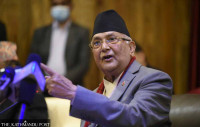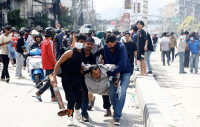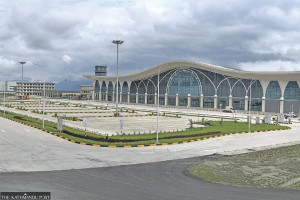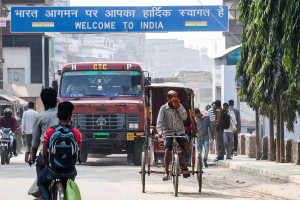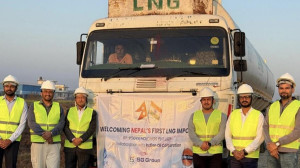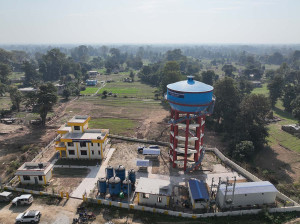Money
Unspent budget
Political instability and interference both at the planning and operational levels hinder timely completion of projects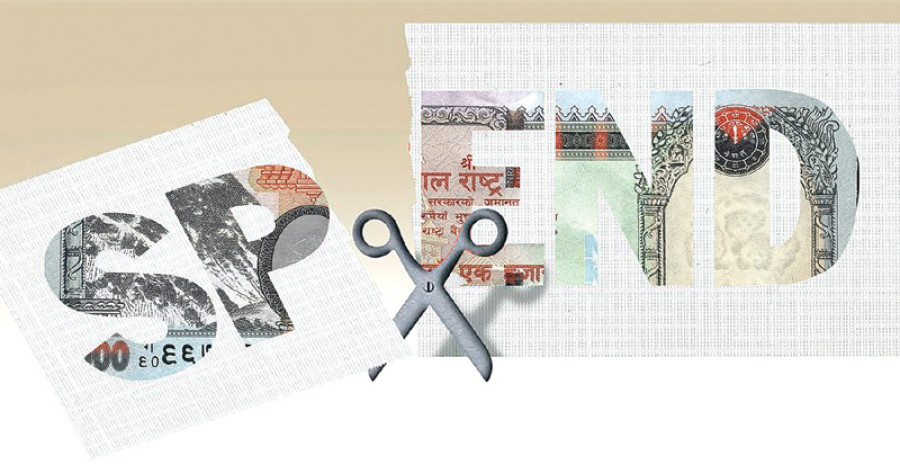
The government is unveiling the budget for the fiscal year 2016/17 at the end of May, one and a half months prior to the start of FY2017. It is expected to give the government and bureaucracy adequate time to finish approval of programmes and projects and subsequently expedite project implementation, resulting in higher spending at the end of the year. This is an important step to create an enabling environment to accelerate spending. However, policymakers should not lose sight of other problems that affect spending capacity.
The under-execution of capital budget is a chronic fiscal issue that is intertwined with politics, bureaucratic competence, management capability of contractors, governance and a maze of acts and policies that are hindering timely, faster and efficient spending. The existing ecosystem for capital budget execution is obstructing, rather than facilitating, timely spending.
Low spending
For a low income economy like Nepal that is struggling to close the infrastructure deficit, low capital budget allocation and absorption rates give a sense of the enormity of the problem. While the planned capital spending averaged 5.5 percent of gross domestic product (GDP) in the last five years, actual spending averaged just four percent of GDP. In FY2016, planned capital budget is around 9.3 percent of GDP (Rs208.9 billion), of which only 23 percent was spent in the first 10 months. A substantial portion of the Rs91 billion allocated for post-earthquake rehabilitation and reconstruction remains unspent.
It is not hard to notice three patterns here: (i) planned capital spending itself is lower given that Nepal needs to invest an estimated 8-12 percent of GDP annually in transport, electricity, water supply, solid waste management, telecom and irrigation to close the infrastructure gap; (ii) capital budget absorption capacity has been chronically low (about 75 percent of planned budget) for a long time; and (iii) persistently delayed spending—about 45 percent capital spending occurs in the last month and 65 percent in the last three months of the fiscal year—raises questions about not only low spending, but also the quality of spending.
Additionally, capital spending is far lower than recurrent spending, which stands at around 16 percent of GDP. Higher capital spending is not only fundamental for growth and helps to usher in a meaningful structural transformation, but also boosts immediate demand for construction materials, increases production of intermediate goods, and generates jobs. It includes spending on civil works, building, plant and machinery, land, vehicles, furniture and fittings, etc. The growth jolt from recurrent spending is not as strong as that from capital spending. Recurrent spending consists of grants to local bodies (includes some capital spending as well), wages and salaries for government employees, interest and subsidy payments, social security, and operation and maintenance.
Unhelpful ecosystem
Politicians and senior bureaucrats lament the low capital spending and openly admit the chronically low absorption capacity, but still seek a higher share of the budget each year. In FY2017, the size of budget will likely be higher than Rs819 billion appropriated for FY2016, although the existing mechanism will not be able to spend it entirely without rectifying the distorted ecosystem governing project selection, spending approval at the centre and spending pattern at the local level.
Six major issues plague capital spending in Nepal. First, structural weaknesses in project preparation and implementation remain unresolved. Barely any substantial homework is done before the inclusion of projects and programmes in the budget, leading to allocative inefficiencies to begin with. For instance, projects of all nature (complex, large or piecemeal and of varying time frames) are included in the budget on the basis of political priorities and not on economic imperatives, which require a strong pipeline of projects ready for implementation subject to the availability of finance, knowledge and technology. Furthermore, these are usually not in sync with medium-term plans and expenditure frameworks.
Second, low project readiness is another recurring problem as pork-barrel and populist projects are inserted without feasibility studies, and time-bound procurement and land acquisition plans. Third, bureaucratic hassles in approving and reapproving projects at various layers (sector ministries, Ministry of Finance and National Planning Commission) and weak intra- and inter-ministry coordination delay the full and effective realisation of planned capital spending. Fourth, infrastructure projects of any scale and nature are riddled with poor project management, especially due to high staff turnover (which erodes institutional memory), lack of staff capacity to administer project implementation, lengthy procurement process, subpar capacity of contractors and weak contract management.
Fifth, high fiduciary risks in project implementation in suburban and rural areas when projects are implemented through local government having limited human resources and administration capacity not only delay spending, but also make it inefficient. Funds allocated to parliamentarians to spend in their constituencies fall in this category.
Finally, political instability and interference both at the planning and operational levels hinder timely completion of projects. The recurring political meddling in the duties of the board of Nepal Electricity Authority and Kathmandu Upatkaya Khanepani Limited are two classic cases. Furthermore, unfruitful interference and inconclusive governance oversight by various parliamentary committees and Commission for the Investigation of Abuse of Authority provide a disincentive to honest and committed officials and contractors.
Scaling up spending
All of these problems cannot be solved overnight. However, a few immediate steps could go a long way in mending this chronic problem. As there will always be an political element to programme selection and inclusion of some pork-barrel projects, this issue arises in every budget cycle. But the sector ministries, the National Planning Commission and Ministry of Finance could work on a common platform to improve allocative efficiency by sanctioning enough funds (with the flexibility of multi-year contract) for projects that are implementation-ready. Furthermore, monitoring and evaluation at all these government agencies could be made more effective than just clicking checkboxes during review sessions. Finally, strong leadership, especially by joint secretaries who are normally project directors, secretaries and ministers, is essential to effectively administer and complete a project. Else, capital budget and funds allocated for the reconstruction will not be spent timely and efficiently.
Sapkota is an economist




 7.12°C Kathmandu
7.12°C Kathmandu


